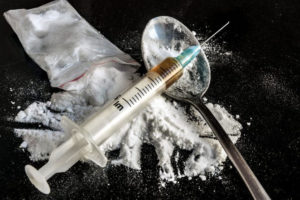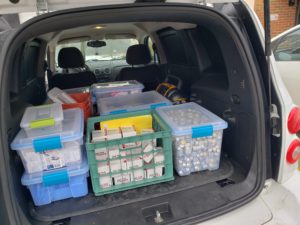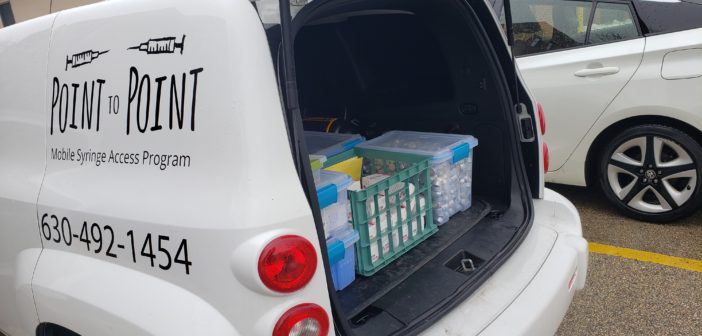Statistics suggest that heroin in the suburbs, specifically DuPage County, has been on a constant upward trend.
According to an article from the Chicago Tribune, 95 people, eight from Naperville, died of heroin and other opioid overdoses in DuPage County in 2017.
This number, while alarming, is accompanied by a steady rise in opioid drug usage reports in the area over the years.
Every year the Naperville Police Department puts out an annual police report. Mentioned in the report is the drug crisis in the area as well as statistics for the year.
In 2016, there were eight heroin deaths and 18 overdoses. Then in 2017, there were another eight deaths, but the number of overdoses increased dramatically to 40. The statistics on prescription drug drop-offs were also listed in pounds. In 2017, there were 565.4 from the police and 2,210 from the fire department.
With a dramatic increase in opioid usage in the past few years, it begs the question of why and where is it coming from.
Naperville Coroner Richard Jorgensen said that Naperville is in the same crisis the whole nation is in. The issue with drug abuse is an all-consuming problem for all over the country and Chicagoland. However, Naperville is at the forefront of changes to the drug conviction process. One example is that individuals can walk to the police station and say they have a drug problem. Rather than facing jail time, they are given the appropriate help.
“The newer view is that people who are addicted have a medical addiction problem rather than a criminal addiction problem,” said Jorgensen. “You’re not just a criminal that needs to go to the penitentiary, you’re a person with a problem that needs to be rehabilitated. That’s a new concept of care in our communities.”

Photo courtesy of Flickr
While care is increasing, the availability of the drug seems to continue rising. Heroin is a drug that comes from a plant, typically grown in Afghanistan or Southern and Central America.
The process of growing and extracting the drug and smuggling heroin requires a lot of work. On the rise are drugs like Fentanyl or synthetics that can be chemically produced in labs. Fentanyl is an opioid that is 80 to 100 times stronger than morphine. It can be disguised as a more potent form of heroin.
This is where we can attribute some of the increase in the drug’s popularity. The pressure is taken off drug dealers that can now make it in a lab.
“The words went from heroin crisis to opioid crisis to overdose and drug crisis because the drugs keep changing so heroin may not necessarily be the crisis right now,” Jorgensen said.
While drugs continue to change, it doesn’t change their popularity. While the opioid issues in the suburbs are nothing new, given statistics, its a growing concern for younger people.
The victims of heroin addiction tend to be women in their late 20s and men in their 30s.
Back in 2012, students from Neuqua Valley High School created a documentary titled “Neuqua on Drugs.” The documentary talks about the death of three students from drug addiction and gives candid interviews of students talking about drug use in schools.
The issue of drug usage in the area is prominent, so what measures are in place to reduce it by the people impacted by it?

Photo courtesy of Lyndsay Hartman
Lyndsay Hartman, ‘19, runs a program called Point to Point which is a harm reduction program. She started the program after her personal experience with drug users.
The program works with people who use drugs and allows them to do it in a safe way. They give away free materials such as syringes, needles, cookers, tourniquets, alcohol swabs and sterile water that allows drug injection to be safer.
“I also give away Fentanyl testing strips which you can actually test your drug supply to see if it’s straight heroin. A lot of people don’t realize there’s Fentanyl in their heroin and that’s why people are overdosing so easily,” said Hartman.
In addition to giving away clean, safe supplies, Hartman’s rule is giving away Narcan to everyone. Everyone who participates in the exchange has to take Narcan, which reverses an opioid overdose and can save lives.
Hartman’s organization has done its best to connect people to other resources as needed. They have connections to treatment centers and help centers that do different testing. At the end of the day, the work Point to Point does has saved lives.
“The reason that harm reduction is so powerful is that when you treat someone with compassion who is not used to getting compassion, it really changes things,” said Hartman. “A couple of them said it was a direct impact from our services because it caused them to take better care of themselves and they started actually giving a shit about themselves.”
According to Hartman, Kane County, where she works out of, is having a major drug epidemic. The morgue is overflowing with the number of overdose deaths. She recently did a Narcan training with families that have lost their children to overdoses.
Despite dealing with hate often, Hartman’s program is working to improve the community.
“It shocks some people and pisses them off… I deal with hate almost daily, but I also have people who are alive because of me,” said Hartman.
The fact is drug use is happening in the community and more people are working to acknowledge it.
“Drug use is a huge problem everywhere. People need to understand that it’s coming into our community and it’s here and it needs to be addressed,” said Hartman. “If you don’t think it’s a problem where you are, then you’re not paying attention.”

